1977 Citroen GS Reviews
You'll find all our 1977 Citroen GS reviews right here. 1977 Citroen GS prices range from $2,090 for the GS Club to $4,070 for the GS Club.
Our reviews offer detailed analysis of the 's features, design, practicality, fuel consumption, engine and transmission, safety, ownership and what it's like to drive.
The most recent reviews sit up the top of the page, but if you're looking for an older model year or shopping for a used car, scroll down to find Citroen dating back as far as 1972.
Or, if you just want to read the latest news about the Citroen GS, you'll find it all here.
Citroen Reviews and News

Euro car brands face slump
Read the article
By Craig Duff · 20 Sep 2012
Factory closures are becoming increasingly probable after European car registrations fell to their lowest level in 22 years last month. The European Automobile Manufacturers Association (ACEA) notes the sales slowdown is accelerating and now predicts a slump of up to 10 per cent for the year.In all, just 688,168 new vehicles were registered in August, the lowest total for the month since the EU data was first compiled in 1990. With some factories already running at 50 per cent of capacity, there is talk of Fiat, Ford and Opel closing the doors on some of their most unprofitable production lines.“Something needs to give,” Fiat CEO Sergio Marchionne said last week, adding that Fiat will outline a blueprint for the “European challenge” when it releases third quarter results later this year. Ford was the biggest loser in August with sales down by almost a third on the previous year, a fact it attributes to a decision not to match rivals discounts during what is traditionally the slowest car sales month on the EU calendar. “There was a lot of short-cycle business and heavy incentives that we decided largely to refrain from, Ford of Europe's marketing chief Roelant de Waard says. The Volkswagen Group's massive product portfolio made it one of the few carmakers to increase sales, led by Audi increasing its share of the luxury car segment. In contrast, Opel/Vauxhall saw a 19 per cent fall in registrations, Fiat was down 18 per cent and both Renault and Peugeot/Citroen were hit with 13 per cent drops. Registrations by country largely reflect those hurting worst from the sovereign debt crisis. Greece and Portugal lead the way with falls of 40 per cent year-to-date, Italy is down by almost 20 per cent and Spanish registrations fell by 8.5 per cent. Ominously for France, registrations this year are down 13.4 per cent, while Germany, which accounts for one in three of all cars sold in Europe, has seen its market contract by 0.6 per cent. The French Government has fiercely resisted factory closures on its turf and criticised Peugeot last month when it announced it would shed up to 10,000 jobs and close a factory in the north of the country. That's not an option for Renault, with the government holding a controlling stake in the French carmaker.
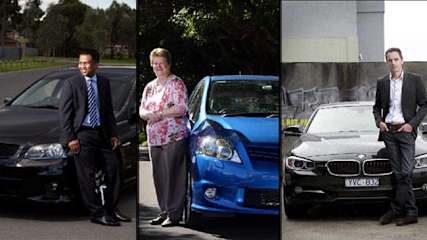
What's driving Australia
Read the article
By Mark Hinchliffe · 10 Aug 2012
Sam Weeraratne is aged 43, lives in Victoria and drives a black Holden Commodore Sportwagon for its load-carrying capacity.He is the typical Australian motorist. Sam is us. Statistically speaking, according to Roy Morgan Research. Despite Commodore being knocked off its top-selling perch recently by Toyota Corolla and HiLux and the Mazda3, it has been the most popular car for two decades.So it remains for now at least the most common car on the road, one owned by 7 per cent of the driving population. Times are changing. The most common type of car is no longer the big family sedan. Now it's the sub-$40,000 small car followed closely by the ever-rising SUV (see breakout). We also like white, silver and black cars, preferably four-door sedans and usually Toyotas.As the Commodore clings on to most popular model status, the Corolla is the top small car. BMW's 3 Series is th e most popular luxury car, LandCruiser the favourite SUV and HiLux the pick of the light commercial vehicles - and regularly, the top monthly individual seller.The most popular vehicle varies between city and country. A RACQ study of Queensland's favourite cars found the Corolla and Camry were Brisbane's favourites. Away from the capital, the bigger car still holds sway. In provincial cities such as Toowoomba, Bundaberg and Townsville, the Aussie sedan is the top pick. Further north in Mackay and Cairns, the LandCruiser is top choice.There are more than 12,474,000 cars on Australian roads with an average age of 10 years. According to the GIO figures, 53 per cent prefer driving a car alone and one in three prefers to travel with the family. Indeed, a GIO survey concludes: “We really are a car society with drivers twice as likely to remember their first car than their first kiss.''One in four of us owns a motorcycle but only 1 per cent use it as primary transport. Two per cent use a bicycle and 4 per cent prefer a bus or tram.INSIDE THE MOTOR HEADLike most Commodore drivers, Sam Weeraratne, chose his Sportwagon because he supports local product. “We firmly believe about buying locally made stuff and helping the economy and I always wanted to help that,” he says.“That leads me to buying a Holden rather than a second-hand BMW or Mercedes. I also try to holiday locally, but you want to go overseas as well.” But Weeraratne is a typical of Commodore drivers. “I like my wine and if I get my hands on a good scotch, I'll have that,” he said. “A night out for me is going out to a good restaurant.I like a lot of modern Australian food and stolen bits from all over the world.” Corolla driver Judy Smith, 62, is a semi-retired carer who commutes 50km. “I'm a very practical person,'' she says. “I needed a reliable car that was safe and Toyota has a strong reputation and good resale value. I had a Toyota years ago.“It's also easy to get in and out of, plenty of room for the grandchildren.” In other ways she's atypical. “I only go to church when I have to and I like my vegetables but I also like meat and seafood. I drink beer and wine and my favourite drink is Asti Riccardona.''Hawks fan Anton Koller is a perfect fit as a 44-year-old IT professional and long-time BMW 3 Series owner. “I love my cars and I love my BMWs because they're fun to drive,” he says. “The eight-speed auto transmission is silky smooth, it has unbelievable brakes and it hangs on in corners. I've always stuck with the blue and white badge.'' He also fits the BMW demographic as health conscious with an active lifestyle and well travelled.COLOURSWe like white cars. Some of that's down to practicality and price non-metallic hues are often cheaper. Increasingly, white's the new black. Especially white with black accents. Postgraduate marketing researcher Andrew Golledge, of the Queensland University of Technology, says white is a practical colour popular with male and female professionals and trades people.Second most popular colour is shared by silver - Golledge says it reflects prestige - and black, which is mostly bought by single men aged 18-35 who are “looking to establish their sense of mystery and interested in expressing themselves and their ambitions”.White is no longer merely white. Car makers, prestige brands in particular, have launched their new model campaigns with white cars - described as pearlescent, metallic, iridescent and any number of names that you're unlikely to find on the Pantone chart.LIFESTYLECommodore owners drink Aussie beer, energy drinks and pre-mixed spirits and order out for pizza, saying expensive restaurants are not worth the money. They like physical activity and go to live sports events rather than art shows or cultural events. Corolla drivers drink low-fat milk, eat healthy and organic foods, devour less red meat and are worried about their cholesterol. They like eco holidays in Australia.BMW drivers like to cook, prefer wine to beer and spirits, and are health conscious, but not as much as Corolla drivers. They enjoy an active social life and are most likely to holiday overseas somewhere they can soak up the culture.BELIEFS“I don't trust the current Australian government,” say Commodore drivers, who believe corruption is a big problem. One third believe homosexuality is immoral, they are suspicious of change, worried about interest rates and believe globalisation brings more problems than it solves.Shy Corolla owners take few risks, recycle, use logic more than their emotions and almost a third believe homosexuality is immoral. BMW owners consider themselves leaders and are optimistic about the future. They are more likely to be accepting of gay people, give to charity, consider themselves green and believe the government is doing a good job.SPORTSAFL is the top sport among motorists, followed by rugby league. For drivers of small SUVs, however, Test and one-day cricket come second to AFL. Support is fairly evenly split among the clubs, although SUV drivers tend to favour the Lions and Swans. Audi drivers support the Bombers and BMW favour the Magpies.Holden and Ford fans are evenly split and Ford drivers don't necessarily favour Geelong, where Fords are built. Mitsubishi drivers don't follow the Crows even though they used to be made in Adelaide. Very few Renault and VW drivers follow AFL but those that do overwhelmingly support the Swans and Magpies.In NRL, the Broncos are the top team among all types of passenger vehicles with up to 10 per cent support; often more than half the next best club. The hardiest Bronco fans are Jeep and Kia drivers with three times the support of the others.The Bronco trend is similar among vehicle brands, however Ford drivers are evenly split with support for Melbourne Storm. Land Rover drivers are among the few that prefer the Bulldogs over the Broncos. French brands Citroen, Peugeot and Renault are least interested in league, but Citroen prefers Storm, Peugeot likes Broncos and Renault likes the Newcastle Knights.RELIGIONCorolla drivers are closer to their god. One in four say they are regular church goers compared with Commodore and BMW drivers (about 15 per cent of whom attend church. Among Christian drivers of these cars, Catholics are more likely to opt for the Corolla or BMW. Of the non-Christians, most drive Corollas, particularly Buddhists and Muslims.NATIONALITYFour out of every five Commodore drivers are Australian-born, compared with about two out of three Corolla and BMW drivers. Asian drivers prefer the Corolla over Commodore and BMW.LIVING STATUSAlso half of all Commodore drivers live with a partner and children and about one in four is married with no children. BMW drivers are similar but they are more likely to not have children. Corolla drivers are evenly split and more of them live with their parents.EDUCATIONBMW drivers excel in the classroom with two out of three having a diploma or degree, compared with almost half of Corolla drivers and less than a third Commodore owners. About a quarter of Holden drivers finished secondary school.SOFT ROADERSNew car buyers have turned to SUVs in record numbers this year, according to the FCAI. Sales of compact models - such as the Nissan Dualis, Mitsubishi ASX, Volkswagen's Tiguan and Hyundai ix35 - have grown at an unprecedented 61 per cent.Australians bought 23,845 SUVs of all types last month. SUVs have tallied 177,100 sales this year or just 20,000 vehicles short of the annual figure for 2007, the record year for vehicle sales. The segment is on track to top 305,000 sales.AT A GLANCEFavoured car type: Small four-door sedan, under $40,000Brand: ToyotaModel: Holden Commodore/CalaisLuxury car: BMW 3 SeriesSmall car: Toyota CorollaSUV: Toyota LandCruiserLight commercial: Toyota HiLuxCar age: 10 years or lessAnnual distance driven: 13,430kmDaily average drive: 11-20kmCars per household: 1.9AVERAGE OWNERSHolden Commodore: Male Victorian aged 35-49Toyota Corolla: Retired Sydney female aged over 50BMW 3 Series: Melbourne professional either sex aged 35-49
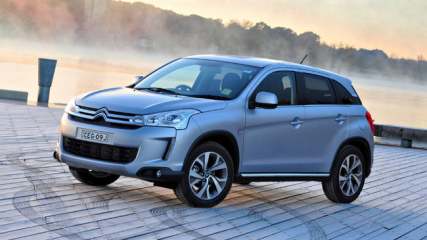
Citroen Aircross 2012 Review
Read the article
By Peter Barnwell · 30 Jul 2012
Talk about leveraging one car platform, talk about 'theme and variations.' There are now three versions of the same car available here; Mitsubishi's ASX (donor vehicle), Peugeot's 4008 and now, Citroen's C4 Aircross.They are same-under-the-skin small SUVs out of a Japanese Mitsu' factory but with different front and rear styling and different interiors though the latter two are nearly identical inside.PRICEASX petrol wins on price and spec' particularly at the top end of the scale which is where the $36,990 ASX Aspire, $38,490 Peugeot 4008 Allure and $33,990 Citroen C4 Aircross Exclusive all play. Neither of the European brands offer a diesel donk.The ASX leads with standard satnav that isn't in either of the "Europeans', Rockford Fosgate premium audio, five year warranty and a reverse camera (standard in the Pug). A new, restyled ASX is due soon offering even more kit to attract buyers its way.BEAUTY CONTESTBut the Citroen wins the beauty contest brandishing a handsome face with a stylish rear end. It has more wow factor than the other two, particularly the current ASX which ain't pretty. This is the first SUV 4WD from Citroen and only two Aircross Exclusive models are available in 2WD and 4WD petrol with CVT auto.KITCitroen has been a bit cunning with the spec' making leather upholstery ($2000) and other goodies like metallic paint, xenon headlights, glass roof and reversing camera optional. Tick these boxes and it will add thousands.But it does get fairly generous kit including Bluetooth phone, striking 18-inch alloys, paddle shift, climate control, comprehensive trip computer, rain sensor, auto headlights and rear park sensors. Cruise control, a pollen filter and auto dim rear view mirror are also included. It's not a povvo pack that's for sure but leather would have been welcome.POWERTRAINAircross runs the same 2.0-litre petrol four out of Mitsubishi Lancer/ASX with 110kW/197Nm output. It has variable valve timing and is capable of returning 8.1-litres/100km on 95 octane. European Aircross has a 1.6 turbo four with more torque lower in the rev range that would probably make it a more responsive drive.DRIVINGAs it stands, the 2.0-litre needs to be treated robustly to get it going at a quickish rate and to overcome that 1450kg+ weight. Alternatively, you can use the paddle shift to flick it up and down through six "steps" that function as gears. It's reasonably quiet once you're up and running and the fuel use drops down quickly on cruise. We saw 7.1-litres/100km without really trying.But CVT.... we're still not convinced and those slurring engine revs are fairly annoying. The ride is controlled and in the comfort spectrum apart from some harshenss from the low profile rubber. You can push it a tad through corners but the limits are clearly defined. Besides, Aircross isn't intended as a sporty vehicle.It will, in 4WD variant, go some way off road thanks to selectable 2WD (front), 4WD and 4WD lock mode. That's all you need for mud, snow, sand and gravel driving. It seats five in relative comfort and has a decent load space expandable with 60/40 rear seats. The safety rating is five star.VERDICTInteresting one. The Citroen looks the part but options jack up the price and there's the Citroen name that's off-putting for some people (dunno why). When it all comes out in the wash, a new Australian distributor due soon might get the price right making this car a much more attractive proposition.Citroen AircrossPrice: from $31,990Warranty: 3 years/100,000kmSafety: n/aEngine: 2.0-litre 4-cyl, 110kW/197NmTransmission: 6-speed CVT, front wheel driveThirst: 7.9 / 100Km, 185 CO2 EmissionsDimensions: 4341mm (L); 1799mm (W); 1625 (H)Weight: 1395kgSpare: space saver

Citroen Berlingo 2012 Review
Read the article
By Peter Barnwell · 16 Jul 2012
Compared to driving a Ferrari 458, getting behind the wheel of a Citroen Berlingo van might not hold a lot of attraction but plenty of people spend a large slice of their lives in vans such as the Berlingo.The trouble is many of these small, bonneted vans aren't nearly as good as the little froggy freighter. That's because Citroen `invented' the passenger car based small van decades ago with its pig-snouted TUB that was built on the Xsara coupe platform of the day.The latest Berlingo is a bigger vehicle spawned from Citroen's C4 Picasso people mover platform and it's a good `un offering a passenger car drive feel, incredible fuel economy and surprisingly good dynamics and ride for a work a day commercial vehicle. Pity it only gets one airbag as standard and stability control is optional.HOW MUCHTwo versions are available here, a short body 1.6-litre petrol for $19,990 and subject of this test, the long body turbo diesel 1.6 that goes for $22,990. A variety of options is available that will add a tad to the bottom line.WHAT YOU GETBoth have a five speed manual transmission driving the front wheels and both can fit in two standard pallet loads in the back on a rubber floor mat and with waist high internal panel protection.The rear barn doors open nearly 180 degrees and are 60/40 split fold enabling Berlingo to nuzzle up close to loading docks. There's also a side slider and all doors are centrally locked from the key fob.LOADEDBoth short and long body models have the same wheelbase with the latter getting more rear overhang to accommodate the extra length. The petrol's payload is 850kg while the diesel takes 750.INSIDEIts compact dimensions don't mean a compromise on useable interior space which is generous in the long body we tested. It even had two and a half seats with three seat belts and a fold-up passenger seat squab for extra storage.Not that it needs any extra with storage options liberally scattered throughout the cab including a parcel shelf behind the sun visors and a flip up glove box atop the instrument console. Plenty of thought obviously went into Berlingo's design to make it as practical a work vehicle as possible.They tried to make Berlingo like an office on wheels. That's why it has Bluetooth, a trip computer, MP3 slot, air conditioning, cruise control, heated exterior mirrors, rake and reach steering adjustment, large front doors and a protection frame behind the driver.On the outside, the front and rear bumpers are designed to protect Berlingo from inevitable bumps and scrapes encountered on its delivery rounds.ENGINEIn terms of actual driving the thing is quite impressive with plenty of pep from the single cam turbo diesel engine rated at 66kW/215Nm output. It can sip fuel at around 5.8-litres/100km from a 60 litre tank. The gearshift is high mounted in the centre console rally car style.MISSINGBut they didn't fit a reversing camera or reversing park sensors, the latter being an option along with auto headlights and rain sensing wipers, the second air bag and stability control. It rides well unladen of with a load thanks to the well sorted front strut rear torsion beam suspension. It could do with a tighter turning circle.VERDICTCould we spend a working life in Berlingo? Possibly. It would be a darn sight better than a one tonne ute with a canopy or some of the other alternatives.Citroen BerlingoPrice: from $22,990 (diesel)Engine: 1.6L turbodiesel, 66kW/215NmTransmission: 5-speed manual, FWDThirst: 5.8L / 100Km
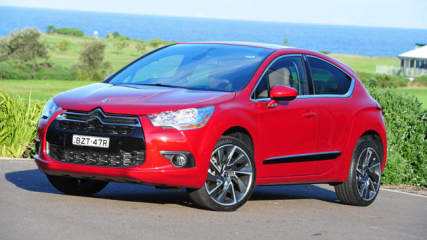
Citroen DS4 2012 Review
Read the article
By Chris Riley · 03 Jul 2012
We turn the spotlight on the car world's newest and brightest stars as we ask the questions to which you want the answers. But there's only one question that really needs answering would you buy one?What is it?The second in Citroen's line of gorgeous sporty models. Looks like a coupe but actually has two "part-time" rear doors with fixed window glass.How much?$39,900 and that's the problem. For the same money you could have a WRX or Golf GTI or for a bit more Renault's superb Megane RS250 or Mini Cooper S for a bit more again.What are competitors?Any of the the aforementioned.What's under the bonnet?A 1.6-litre turbocharged four cylinder petrol engine. In fact, it's the same turbo that powers the Cooper S, with 147kW of power and 275Nm of torque.How does it go?Six-speed manual only. If you want an auto then you're stuck with the 115kW engine instead. Strong mid-range performance, but it's a little slow off the line, with 0-100km/h taking 8.5 seconds.Is it economical?Takes more expensive 95RON premium unleaded. Rated at 6.4 litres/100km, we were getting 7.7 litres after about 300km.Is it green?Yes. Scores 4.5 out of 5 stars from the Govt's Green Vehicle Guide, with CO2 emissions of 149g/km.Is it safe?No rating from Australian NCAP but Euro NCAP gives it five stars. Blind spot warning is standard.Is it comfortable?The leather-trimmed sports seats are a work of art. They're heated and have an in-built massage function. Rear legroom is tight and the interior a little noisy for our liking, depending on road surface.What's it like to drive?Fun and fairly lively on boost, with gearing which keeps it in the power zone. Positively surreal at night with its huge windscreen and instruments blacked (there's a button to do this). Doesn't cope well with broken surfaces. Front wheels scrabble for traction and some backlash through the steering wheel.Is it value for money?Yes. Nothing to spend. Has some unique touches too, like the huge windscreen, the ability to change the colour of the dials and instruments and the obvious attention to detail not to mention themassage seats. There's plenty of room in the boot too, although it hides a puncture repair kit instead of a spare.Would we buy one?It's appealing, that's for sure. Looks terrific, goes hard and has some extremely cool features. The 19 inch wheels are a work of art but ultimately the DS4 falls short of the mark if measured purely in terms of performance ie. you can do better for less.Citroen DS4 D-SportPrice: from $39,990Engine: 1.6-litre 4-cyl turbocharged 147kW/275NmTransmission: 6-speed manual, FWDThirst: 6.5L/100km; 149g Co2 per km

Best small commercial vans
Read the article
By Neil Dowling · 28 Jun 2012
The idea is simple - make as much cargo space inside the van's perimeter as possible. Simple stuff, really, but then it gets hard. Make the van safe - preferably with a five-star crash rating like the Mercedes Vito. Load it with passenger-car features, make it flexible with seating, ensure ride comfort and

Citroen C4 Picasso spy shot
Read the article
By Paul Gover · 27 Jun 2012
...actually wind back its adventurous looks.The new Picasso is coming at the Paris Motor Show in September but this Carparazzi picture points to a more conventional big-box design, although it has trendy turbine-design alloys and retains the small window behind the A-pillar that's a signature of the current C4.
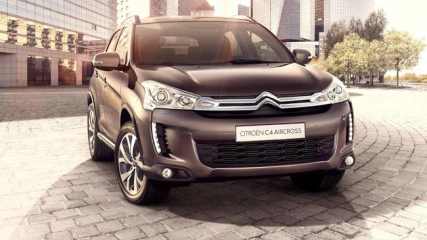
Citroen Aircross SUV arrives in July
Read the article
By CarsGuide team · 19 Jun 2012
Arriving in July, the Citroen C4 AirCross is the same under the skin as Mitsubishi's ASX and the new Peugeot 4008 and it rolls of the same Japanese production line.Power comes from the same 2.0-litre, 110 kW petrol four cylinder engine and AirCross will be available with a choice of two or four wheel drive as well as manual or a CVT self-shifting gearbox.No diesel option is currently available. The 4WD variant offers a choice of two wheel drive for maximum economy; four wheel drive difficult conditions and `4WD Lock' for the toughest conditions.The handsome styling of AirCross draws upon Citroen's curent DNA. A comprehensive equipment list and "value for money" pricing will be notified soon.
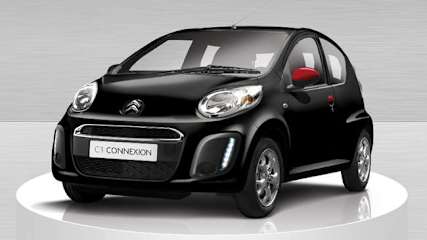
Citroen reveals crowdsourced C1 Connexion
Read the article
By Karla Pincott · 11 May 2012
Hot on the heels of the Volkswagen People's Car project comes Citroen revealing the result of its own crowdsourced design.
While Volkwagen’s project looked at entire vehicle designs – and was flooded with submissions from 119,000 keen Chinese participants – Citroen has restricted their crowdsourcing to just the C1’s spec and fit-out details.
More than 24,000 Citroen fans submitted ideas for the little car, using a special configurator app on the French brand’s UK web page. The result is the C1 Connexion that has been revealed as an image – but Citroen says will be built and sold. There were also about 10,000 entries in a competition to win one when it does hit the showroom floor.
The app incorporated a virtual ‘factory floor’ that allowed entrants to choose body styles, details, colours and accents for the C1 connexion, which will be built on the new Citroen C1 1.0i manual-transmission city car sold in Europe.
The most popular result was a three-door body in Caldera Black with Scarlett Red accents and more stylish alloy wheels, adding to the C1’s existing trim that includes LED daytime running lights. However, don’t expect to see the C1 here. Citroen importer Ateco Automotive has already said there is no chance of seeing it here, partly on its size but also because government policy makes the car too expensive.
“There isn’t a market for a car at that size at the price we’d be able to offer it,” Ateco spokesman Edware Rowe says. “It’s a very small car by Australian standards and because Australia has no tax rebate based on carbon emissions, it would be just as expensive as larger cars like the Citroen C3. In Europe, buyers enjoy enormous tax advantages offered to low emissions cars, and of course none of that applies here at all.
Rowe says the Australian government stance needs to change for “a while host of reasons”, pointing out that Australia is the last mature market in the world not to have a tax system based on emissions, fuel economy and engine size. “Essentially what that says quite clearly is that the government hasn’t thought through an integrated car taxation policy with an emissions policy, and the effect of that is two-fold.
“On one hand there’s no encouragement to buy cars with better fuel economy, but equally it stops high technology vehicles with better fuel economy and lower emissions coming to Australia. Carmakers build more expensive technology in the knowledge that the tax benefits in other markets will make them affordable for the buyer.”
Rowe says the Australian government stance prevents that technology being available to the Australian public, and the Gillard government’s carbon tax will not help the situation. “The carbon tax does absolutely nothing to encourage people to drive fuel-efficient and lower emission cars. What Australia is crying out for is a graduated tax based on economy and CO2 emissions.”

Citroen Berlingo van line grows
Read the article
By CarsGuide team · 07 May 2012
Citroen's compact Berlingo van is now available in a choice of two bodies and two engines with more equipment and sharper pricing.
The latest Berlingo range consists of the standard body powered by the 1.6-litre, 66kW petrol engine and the long body, with interior volume lifted from 3.3 to 3.7 cubic metres, powered by the 1.6-litre, 66kW turbodiesel engine, which boasts an additional 83 Nm of torque to cope with its bigger load carrying capabilities.
The long body turbodiesel also gains a rear cargo mat and the convenience of Bluetooth hands free mobile phone operation. Revised pricing sees the petrol powered standard body Berlingo priced at $19,990 and the long body turbodiesel pitched at $22,990 plus on road costs.
Citroen arguably invented the whole idea of box van with the Citroen TUB and the car-derived 2CV van setting a design standard for the two most common van types.
Berlingo looks as if it is car-derived, with a bonnet and a conventional driving position. However, there is no Berlingo car to hamper Citroen's designers from making the ideal small van so although bonneted, the driver sits high with easy access, the van section blends into the overall vehicle shape to produce a shape that is as functional as it is homogeneous.
The Berlingo eliminated the 'bubble back' shape of the conventional car-derived van and all its handicaps. Citroen threw into the mix a range of functional, useful features and equipment designed for the van driver on the road all day, plenty of storage space, seats that are comfortable and easy to get into and out of all day.
This second generation Berlingo is a fresh clean design, with its bonneted good looks and box van carrying ability. It sits on a Citroen C4 Picasso platform, which is derived from the underpinnings of the World Rally Championship dominating Citroen C4 WRC car.
By moving to the bigger platform from the C4 Picasso, the new Berlingo offers significantly more space, up from 3.0 to 3.3 cubic metres. The original Berlingo had a optional simple folding seat that provided a table. The new Berlingo has a new seat, both a table and a load space extender, lifting the volume to 3.7 cubic metres, 4.1 cubic metres in the long body version.
To meet business demands for greater efficiency, better performance and lower running costs, Citroen has developed the new Berlingo to deliver more. It has greater carrying capacity, thanks to its larger load compartment and higher payload capability, it has even higher standards of driver/passenger safety and comfort and delivers optimum performance and economy with low running costs.




